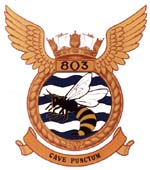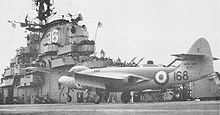
Royal Naval Air Station Lee-on-Solent,, is a former Royal Naval Air Station located near Lee-on-the-Solent in Hampshire, approximately 4 miles (6.44 km) west of Portsmouth, on the coast of the Solent.

800 Naval Air Squadron was a Royal Navy Fleet Air Arm carrier-based squadron formed on 3 April 1933 by amalgamating No's 402 and 404 Flights.
801 Naval Air Squadron (NAS) was a Fleet Air Arm squadron of the Royal Navy formed in 1933 which fought in World War II, the Korean War and the Falklands War.
806 Naval Air Squadron was a fighter squadron in the Fleet Air Arm that existed from February 1940 to December 1960 and saw active service in the Norwegian campaign, the Dunkirk evacuation and the Malta Convoys.

809 Naval Air Squadron, nicknamed the Immortals, is a squadron of the Fleet Air Arm of the United Kingdom. It was first formed in 1941 and flew in the Soviet Union, the Mediterranean and the Far East during the Second World War. After active service during the Suez Crisis, 809 was disbanded in 1959. Reformed in 1963 to fly Blackburn Buccaneers, the squadron was disbanded briefly in 1965–66, and then again in 1978. A brief period during the Falklands War saw 809 reformed to bring Sea Harrier FRS.1 aircraft south to the UK task group and to fly from HMS Illustrious.

807 Naval Air Squadron was a Naval Air Squadron of the Royal Navy.

701 Naval Air Squadron was a Royal Navy Fleet Air Arm squadron, which last disbanded during September 1958 at RNAS Lee-on-Solent where it was a Helicopter Trials, Communications and Fleet Requirements Unit. It initially formed during July 1936 as a Catapult Flight operating out of Malta and routinely embarking in RN ships such as, HMS Barham, HMS Malaya, HMS Valiant and HMS Warspite. By autumn 1939 it was known as 701 Naval Air Squadron but disbanded in January 1940. It was active twice more during the Second World War, between May 1940 and June 1941 on special duties and then between October 1942 and August 1943 performing anti-submarine patrols. Reforming in April 1945 it was designated a Communications Unit, operating out of Heston until disbanding in 1947. It last reformed as a Fleet Requirements Unit at HMS Daedalus, Lee-on-Solent, during October 1957.

808 Naval Air Squadron is a ship-based helicopter squadron of the Royal Australian Navy.

736 Naval Air Squadron was a Naval Air Squadron of the Royal Navy. It was most recently recommissioned at RNAS Culdrose on 6 June 2013 to fly the BAE Systems Hawk T1, following the disbandment of the Fleet Requirements and Aircraft Direction Unit (FRADU) and operated up until March 2022.

718 Naval Air Squadron was a Naval Air Squadron of the Royal Navy created on 15 July 1936 to serve as a Catapult Flight of the Fleet Air Arm. It was elevated to squadron status at the end of 1937, before being disbanded on 21 January 1940. It was re-formed on 5 June 1944 to operate as the Army Co-operation Naval Operational Training Unit before being disbanded again on 1 November 1945. On 23 August 1946 it was reformed for the third time to operate as a Seafire Conversion Squadron but was disbanded less than one year later, on 17 March 1947. On 25 April 1955, after almost a decade, the squadron was reformed once more to train RNVR on jet aircraft. Once this work was complete, it was disbanded for the final time on 31 December 1955.

748 Naval Air Squadron was a Naval Air Squadron of the Royal Navy's Fleet Air Arm. It was initially formed, at RNAS St Merryn, as a Fighter Pool Squadron, before becoming No. 10 Naval Operational Training Unit. The squadron moved to RNAS Henstridge in February 1944 and then onto RNAS Yeovilton in the March. In September 1944, 748 NAS moved to RNAS Dale, in Wales, remaining for just under twelve months, before moving back to RNAS St Merryn in August 1945, where it disbanded in February 1946. During its existence, the squadron was equipped with numerous aircraft and various marks, operated by the Fleet Air Arm.

757 Naval Air Squadron was a Naval Air Squadron of the Royal Navy's Fleet Air Arm. It was first formed as a Telegraphist Air Gunner Training Squadron in 1939, operating out of RNAS Worthy Down, but after three months it went into abeyance, only to reform again in the same role, at the same location, in 1941 and operating until 1942. It then reformed as a Fighter Pool Squadron & Operational Training Unit at RNAS Puttalam, in Sri Lanka, in 1943. After a brief spell at RNAMY Tambaram, in India, the squadron finally disbanded at RNAS Katukurunda, in Sri Lanka, at the beginning of 1946.
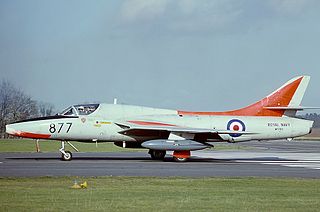
759 Naval Air Squadron was a Naval Air Squadron of the Royal Navy's Fleet Air Arm. It was created on November 1, 1939, and was disbanded on December 24, 1969. It was initially intended as a Telegraphist Air Gunner Training Squadron but became a Fighter School and Pool Squadron in 1939, at RNAS Eastleigh. It operated out of RNAS Yeovilton from 1940 to 1946, as part of the Naval Air Fighter School. In 1943 a detachment operated out of RNAS Angle, working with 794 NAS and known as the Naval Air Firing Unit. It was again the Naval Air Fighter School upon reformation in 1951 and disbandment in 1954, firstly at RNAS Culdrose and then moving to RNAS Lossiemouth, in 1953. The squadron reformed again, this time at RNAS Brawdy in 1963, as the Naval Advanced Flying Training School, before finally disbanding in 1969.
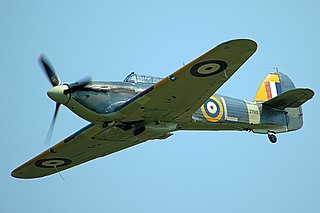
760 Naval Air Squadron is a Naval Air Squadron of the Royal Navy's Fleet Air Arm. The squadron first formed on 1 April 1940 as No.1 Fleet Fighter Pool with a variety of aircraft types before standardising in 1941 on the Sea Hurricane. In this role it disbanded on 31 December 1942. In May 1944 760 NAS briefly reformed as an Anti-Submarine Operational Training Squadron before disbanding into 766 Naval Air Squadron in November. Reformed again as part of No.1 Naval Air Fighter School in April 1945 it converted fighter pilots to the Corsair and then the Seafire until 23 January 1946 when it disbanded.
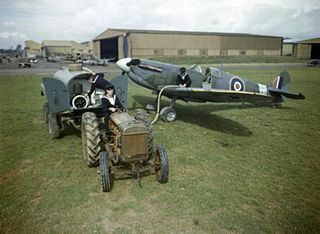
761 Naval Air Squadron was a Naval Air Squadron of the Royal Navy's Fleet Air Arm. It was formed at RNAS Yeovilton, as a Fleet Fighter School, in 1941. The squadron moved to RNAS Henstridge, in 1943, as part of the No. 2 Naval Air Fighter School. It remained at Henstridge and in this role, until January 1946, when the squadron disbanded.

764 Naval Air Squadron was a Naval Air Squadron of the Royal Navy's Fleet Air Arm. It initially formed in April 1940, at RNAS Lee-on-Solent, as an Advance Seaplane training Squadron. The Squadron moved to RAF Pembroke Dock in July 1940, and later to RNAS Lawrenny Ferry, in October 1941 and remaining there until the Squadron disbanded in November 1943. It reformed at RNAS Gosport, in February 1944, as the User Trials Unit, however, the Squadron was decommissioned for the second time in September 1945. 764 NAS reformed again, at RNAS Lossiemouth, in May 1953, where it became an Advanced Training Unit. It moved to RNAS Yeovilton in September 1953, where it received its first jet aircraft. In November 1954 the Squadron disbanded.

767 Naval Air Squadron was a Naval Air Squadron of the Royal Navy's Fleet Air Arm. It was initially formed as a Deck Landing Squadron in 1939, when 811 Naval Air Squadron was renumbered 767 NAS, at RNAS Donibristle. A detachment went to Hyeres de la Palyvestre in the south of France, enabling training in fairer conditions. While here, the squadron took on an operational mission, with a bombing attack on the Italian port of Genoa. With the fall of France the squadron evacuated to Algeria, where it split. Part went to Malta, forming 830 Naval Air Squadron, the other part to HMS Ark Royal, with personnel returning to the UK via Gibraltar. The squadron regrouped at RNAS Arbroath and moved to the Deck Landing School at RNAS East Haven in 1943.
790 Naval Air Squadron was a Naval Air Squadron of the Royal Navy's Fleet Air Arm.

791 Naval Air Squadron was a Naval Air Squadron of the Royal Navy's Fleet Air Arm. It formed as an Air Target Towing Unit, at RNAS Arbroath, in Scotland, in October 1940. It operated various types of aircraft for target towing duties, used to support air gunnery training and practice. The squadron disbanded in December 1944, at Arbroath. It reformed at RNAS Trincomalee, in Sri Lanka, in November 1945, as a Fleet Requirements Unit. The squadron moved to RNAS Sembawang, in Singapore, in December 1945, ferried via HMS Smiter. It also operated a Communications Flight and an Air-Sea Rescue Flight, as well as undertaking anti Mosquito spraying duties. 791 NAS disbanded at Sembawang in June 1947.

Royal Naval Air Station Twatt, is a former Royal Navy Air Station located near Twatt, Orkney, Scotland. It was built by the Admiralty and was commissioned on 1 April 1941. On 1 January 1942 it became an independent command as HMS Tern. The airbase was designed to provide accommodation for disembarked Front-Line squadrons and accommodation for disembarked Ship's Flight Aircraft and was home to the Home Fleet Fleet Requirements Unit, 771 Naval Air Squadron.
